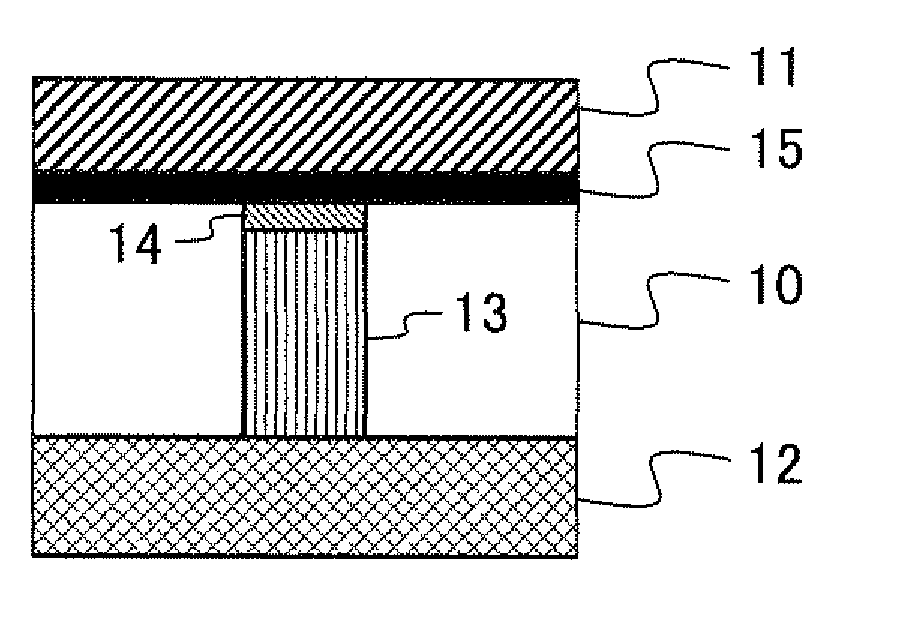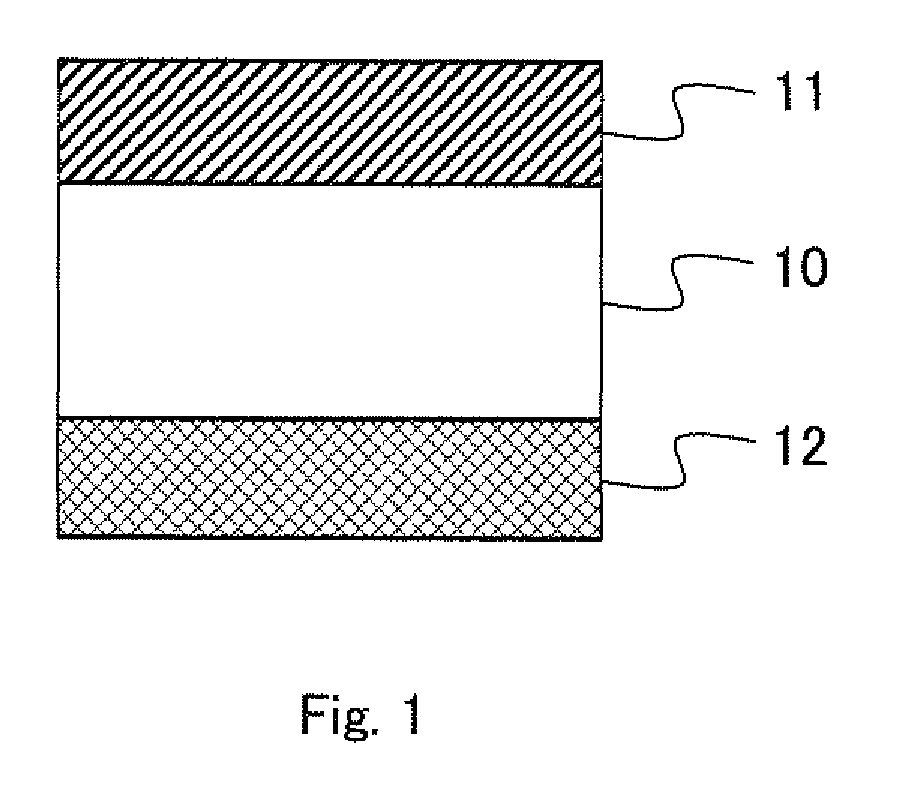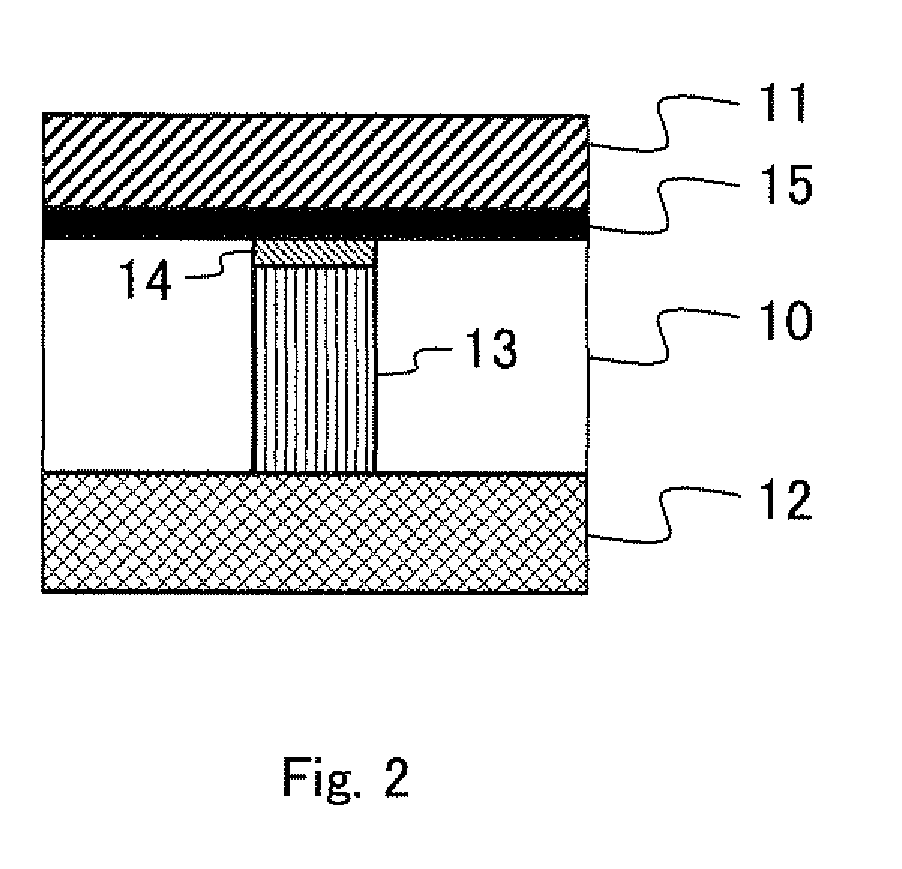Variable resistive element, manufacturing method for same, and non-volatile semiconductor memory device
a technology of resistive elements and manufacturing methods, applied in semiconductor devices, digital storage, instruments, etc., can solve the problems of difficulty in restricting inconsistencies and large power requirements for switching to a high resistance state, and achieve low power consumption, low resistance inconsistency, and high speed
- Summary
- Abstract
- Description
- Claims
- Application Information
AI Technical Summary
Benefits of technology
Problems solved by technology
Method used
Image
Examples
first embodiment
[0127]An element and a method according to a first embodiment of the present invention are described below with reference to FIGS. 1 to 24. The variable resistive element according to the present invention is a variable resistive element having an original structure with a metal oxide layer 10 between a first electrode 11 and a second electrode 12 as an element structure, as shown in FIG. 1, and an electrical resistance between the first and second electrodes 11 and 12 changes in a reversible manner in accordance with application of electrical stress across the first and second electrodes 11 and 12. In addition, in this variable resistive element, a filament 13, which is a current path where a density of a current flowing between the first and second electrodes 11 and 12 is locally high, is formed in the metal oxide layer 10 in a “forming” process described below, and part or the entirety of the filament 13 in FIG. 2 is connected or disconnected through a switching operation describ...
example 1
[0149]The original structure of the element according to the present invention was prototyped by forming films on a silicon substrate with a thermally oxidized film in the order of Ti / Pt (second electrode) / cobalt oxide (metal oxide layer) / Ta (first electrode) / Pt in the above-described mode. In addition, a first forming voltage of +9.9 V was applied to the first electrode with reference to the second electrode, and a second forming process for generating an interface oxide was carried out through heat treatment of 200° C. FIG. 8 shows a TEM photograph showing the element according to the present invention after the second forming process in a cross section. It can be seen that an interface oxide (tantalum oxide) having a thickness of approximately 5 nm was generated in the interface between the Ta electrode (first electrode) and the cobalt oxide (metal oxide layer). FIG. 9 shows the voltage pulse response (switching properties) of this element according to the present invention. It c...
example 2
[0150]The original structure of the element according to the present invention was prototyped by forming films on a silicon substrate with a thermally oxidized film in the order of Ti / Pt (second electrode) / cobalt oxide (metal oxide layer) / Ta (first electrode) / Pt in the above-described mode. FIG. 10 shows the IV properties of this element according to the present invention when a voltage is applied across the first and second electrodes. As shown by the arrows in FIG. 10, voltages were applied in the order of A, B, C and D. The voltage application indicated by A is a first forming process where the metal oxide layer is broken down through the application of a voltage of +10 V so that a filament is formed in a temporary low resistance state. The voltage application indicated by B is a second forming process where a large current flows in accordance with the resistance value of the filament in a low resistance state, and the Joule heat oxidizes the Ta electrode and the filament end in ...
PUM
 Login to View More
Login to View More Abstract
Description
Claims
Application Information
 Login to View More
Login to View More - R&D
- Intellectual Property
- Life Sciences
- Materials
- Tech Scout
- Unparalleled Data Quality
- Higher Quality Content
- 60% Fewer Hallucinations
Browse by: Latest US Patents, China's latest patents, Technical Efficacy Thesaurus, Application Domain, Technology Topic, Popular Technical Reports.
© 2025 PatSnap. All rights reserved.Legal|Privacy policy|Modern Slavery Act Transparency Statement|Sitemap|About US| Contact US: help@patsnap.com



